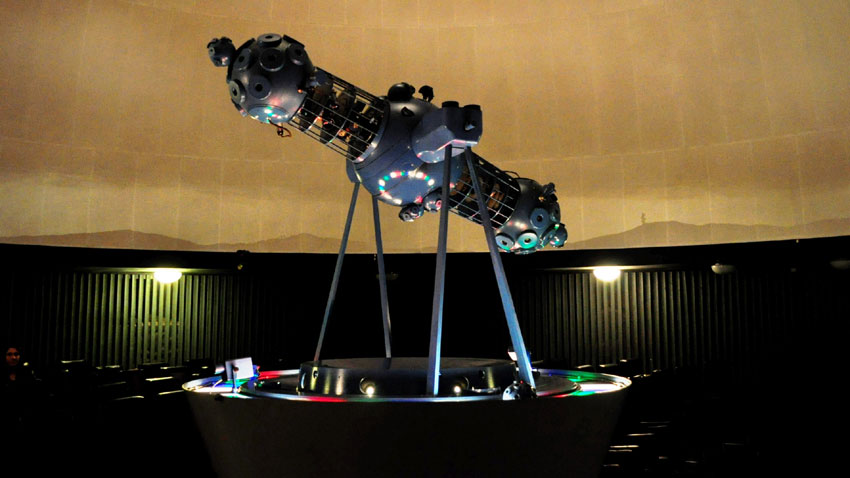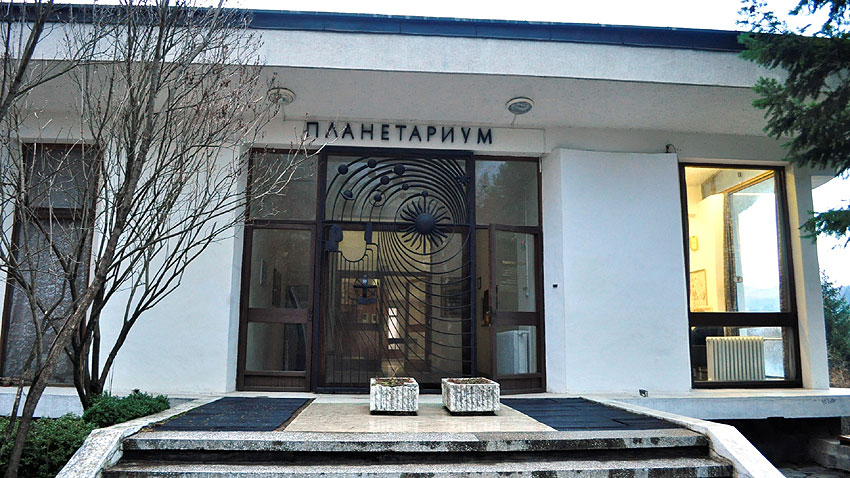Is there anyone who, when taking a glance at the night sky filled with billions of starts, does not feel lonely and mortal? People currently focus on their lives only and are vaguely aware of what surrounds them. However, curiosity continues to push us forward on the meandering road of knowledge. One can go virtually deep in space, where time slows down or moves incredibly quickly and where, perhaps, an intelligent life exists. The planetarium in the town of Smolyan (situated in the Rhodope Mountains) offers such an incredible travel in time and space with the speed of light and our own imagination.

Over 40 star shows are now being held at the Smolyan Planetarium and its visitors often return to this place again and again to watch the new space show. In the summer season, when the town of Smolyan and its surroundings are packed with tourists, the oval hall of the planetarium which has a domical ceiling welcomes all who wish to go deep in the Universe. For the purpose, an interesting device called RFP, or a virtual device for space travels, was installed there. This device was produced in the plants of Carl Zeiss Jena in Germany. The appliance is a combination of optical and mechanic components which represents precisely the motion of the objects in Space- the Sun, the Moon, the planets as well as all other astronomical objects and events. In other words, a real copy of the night sky is shown on the vault of the planetarium. The Sun slowly sets to give way to a dark night sky which slowly covers with twinkling stars, planets, nebula, comets and asteroids which shuttle through Space. The show is accompanied with a nice music and a gentle female voice. The lectures are held on different topics. We learn more about the programs offered at the Smolyan Planetarium from its Director Mariana Hadzhigencheva.
 “We offer fairytales for the youngest children and various programs for students: about the Sun family, the Earth and how to read the night sky. However, we also have shows for the mass audience. For instance, we represent the Big Bang or a short story of the Universe. Our star show also provokes huge interest. It tries to answer the question “Are we alone in Space and where else we can find life?”
“We offer fairytales for the youngest children and various programs for students: about the Sun family, the Earth and how to read the night sky. However, we also have shows for the mass audience. For instance, we represent the Big Bang or a short story of the Universe. Our star show also provokes huge interest. It tries to answer the question “Are we alone in Space and where else we can find life?”
The show is translated in six languages, because the Smolyan Planetarium is the biggest in that region and is often visited by foreign tourists who stay over in the town of Smolyan and the nearby Rhodopean villages. There is also a small observatory under the planetarium’s vault where a 15 centimeter mirror telescope was installed.

“It is very interesting”, Mrs Hadzhigencheva goes on to say. “People can see the spots over the photosphere of our Sun-the sunspots are formed as a result of the natural activity of the sun and determine whether magnetic storms can be expected to reach the Earth. This is something people are interested in. Besides, we make evening observations once a week. Thus, we can see much more objects- nebula, star piles, some close galaxies, etc. People show huge interest towards these objects. Some 34 thousand tourists visit the Smolyan Planetarium each year”, concludes Mariana Hadzhigencheva.
English version: Kostadin Atanasov
In its centuries-old history, the Etropole Monastery "Holy Trinity", also called "Varovitets", has been preserving valuable pages decorated by skilled artists. Here hundreds of years ago, one of the most productive literary schools in Bulgarian..
Cape Kaliakra is one of the most picturesque places along Bulgaria’s Black Sea coast. The narrow rocky peninsula cuts 2 kilometers through the sea. Its steep slopes are 60-70 meters high. The waves have cut deep niches and caves..
As a result of glacial erosion during the Quaternary era, clusters of lakes were formed in the higher reaches of Rila Mountain, an essential element of the landscape. The string of the seven lakes of Rila is the longest, most scenic and most..

+359 2 9336 661
